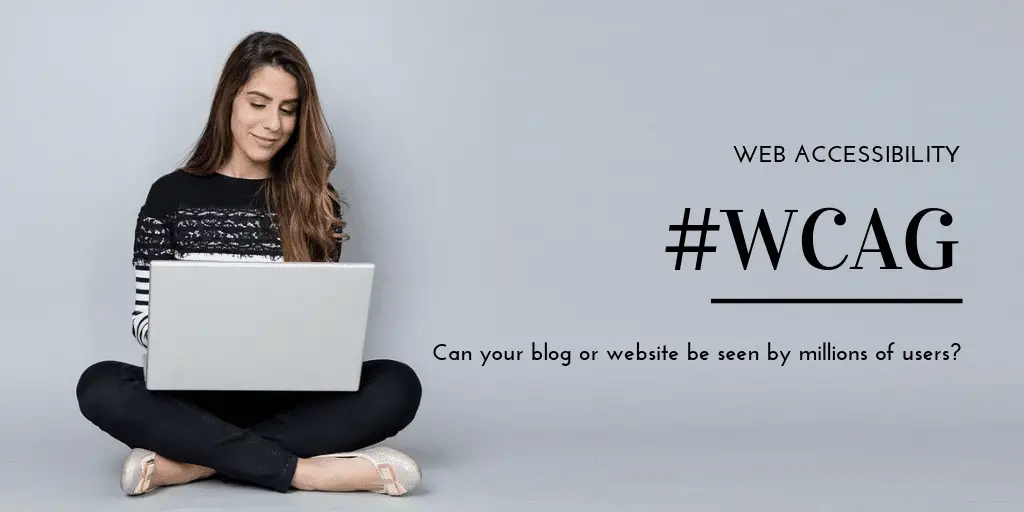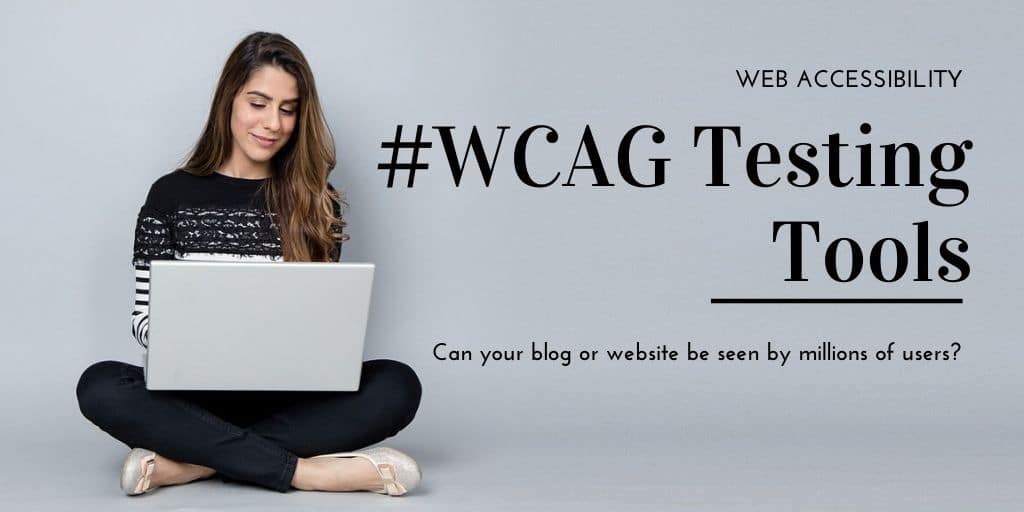There has been a slow boil effort making websites accessible for the disabled. For the past several years, websites outside of government it was thought of as “nice to have” especially for ecommerce, transportation, insurance and banking where current and potential customers with disabilities may need accommodation in order to access important site content. Those days are over. Now even smaller business sites are looking at Web Content Accessibility Guidelines, (WCAG) on there improvement roadmap.
The Audience is Huge and Underserved

One accessibility software company pointed out that one in five Americans have some kind of disability with a total disposable income exceeding $645 billion dollars annually. What is a chief concern for content providers is that if this huge market can’t access and read your site, what good is it? It’s a fair question. Those with disabilities change the way they approach their online experience. Users may use toggle switches, or tab through a site or use voice input. If you have an image heavy site, it may go totally unnoticed by those using screen-reading software. If those with visual impairments cannot magnify a web page before they can read it, they will pass it by, or in certain cases sue you.
Disability in the United States by the Numbers
The US Census Bureau reported that:
- 19.9 million people have motor skills challenges that cause difficulty to lift or grasp. This may affect their ability to use a mouse or keyboard.
- 8.1 million have a visual impairment. Reliance on screen readers and the ability to magnify and size the screen is critical. They may rely on a screen reader, or have color blindness.
- 7.6 million have a hearing impairment. (Such as the author this post does) These users look for transcripts and captions for audio and video media.
So What are the Web Accessibility Guidelines (WCAG)

Web accessibility ensures that everyone, even those with disabilities, can comfortably access and read content on websites. There are three major sources of web accessibility guidelines in the United States
W3Cs WCAG 1.x and 2.x – The Web Content Accessibility Content Guidelines (WCAG) was developed by the World Wide Web Consortium and considered the de facto accepted web accessibility standard. There are three levels: A – Must Have, AA – Should Have and AAA – Nice to Have. The standard most sites strive for is AA.
Section 508 of the Rehabilitation Act of 1973 – This is primarily based on WCAG 2.0 AA, mandating that all federal agencies and any local or state resources receiving federal funding must comply with its rules.
Americans with Disabilities Act (ADA) – ADA Title III regulations are the most cited web accessibility law by plaintiffs in accessibility lawsuits. There is not a specific language in the Act regarding websites. Never-the-less it’s been the catalyst for thousands of lawsuits.
Introduction to Web Accessibility Standards
WCAG Lawsuits Skyrocket
ADA Title III Lawsuits (Website Accessibility) have skyrocketed over the past 5 years. In 2014 there were just over 4400 suits filed in Federal Court. Its estimated that in 2018, number will approach 10,000. Most of the suits originate in California, New York and Florida.
Tools for the WCAG Assessment and Remediation

Chances are you have a tool on your computer right know that can assist in testing your accessibility compliance. If you’re a Chrome Browser user click on the three dots on the upper right of your browser. Click on More Tools >> Developer Tools. In the Developer Tools scroll over to the right and select “Audits”. This is Google’s Lighthouse tool which has Performance, Progressive Web App, Best Practices, Accessibility and SEO. You can quickly audit individual pages on your blog or website.
Running the Accessibility audit on your individual log posts will give you an overall score and suggestions on how to improve your site for WCAG.
Overlap Between SEO and
Web Content Accessibility Guidelines
Lisa McMichael is a Senior User Researcher for Perficient Digita noted that, “It’s becoming clear that major search engines, such as Google, are promoting the SEO benefits of Web Accessibility techniques.” The introduction of the Lighthouse tool within Chrome in 2017 gives a strong indicator of just how much the search engine is looking to provide strong search results for WCAG friendly sites. The overlap between SEO and WCAG in over 10 key areas is another motivation that becoming WCAG 2.0 compliant will buttress your SEO score in the eyes of the major search engines.
Install a Screen Reader and Try it on Your Site

We installed NV Access NVDA screen reader and tested against our sites. It’s an amazing experience turn off your monitor and put away your mouse and operate with only tapping the keyboard and listening to the screen reader explore your site. When it tried this on my own blog I was shocked. In the next section we will outline those first steps to improve the experience for screen readers and score better with WCAG evaluation tools.
NVDA screen reader is free to download and install.
What You Should Do Right Now

If you have tried NVDA screen reader on your own site, you may be inspired to make changes to make it smoother and easier to understand. The first step is to know that you can go a long way to making your blog more accessible by paying attention to six basic areas. Tackling these elements will ensure your taking the beginning steps to making your site more accessible and friendly. It also shares good practice with SEO to boot.
- Ensure every image has descriptive alt-text and captions – This text is read to them aloud via a screen reader. Without this in place, there is no way to determine what the web object is or what it means.
- Audit each link-out and ensure that it has description on where it’s going. Avoid “Click Here”. Also don’t open the link in a new window. Screen readers can’t deal with it.
- Ensure Page Titles Are Descriptive, Yet Succinct – This is the first thing screen readers will hit. It’s critical that it lets the listener know they are on the right page.
- Use descriptive headers – This gives a reader an idea on the content the follows.
- Form Field Labels – Make sure each field in a form has a description of what it is for. Ensuring URLs Are Human Readable and Logical – This gives a site an edge for content and SEO.
Remediating just these areas will not necessarily make your site WCAG complaint but it’s a step in the right direction.
The WCAG Choice is Yours

It was noted, and I will stress, that there is no magic code or automated tools that you can currently use to assess and remediate your site or blog. It will involve a mix of automated scans and real person testing to achieve Web Content Accessibility Guidelines version 2.1 AA compliance. The choice is yours, but this is a goal that most business customers are targeting.
Related Reading
- ThumbWind’s ChatBot is the Michigan Thumb’s First AI Bot
- ThumbWind Grows in 2018
- ThumbWind Uses Translation Capability from Google
- ThumbWind’s Accessibility Goals
- WCAG Complaince and SEO – Do Both Now and Benefit Later






One thought on “Get Up to Speed on Web Content Accessibility Guidelines”